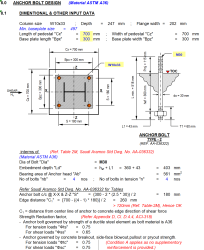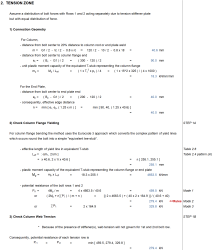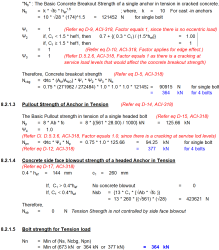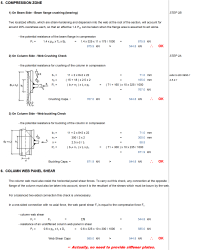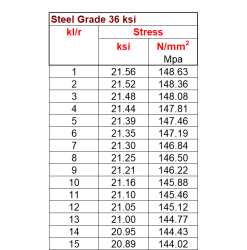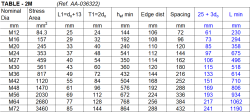ANCHOR BOLT_BASE PLATE
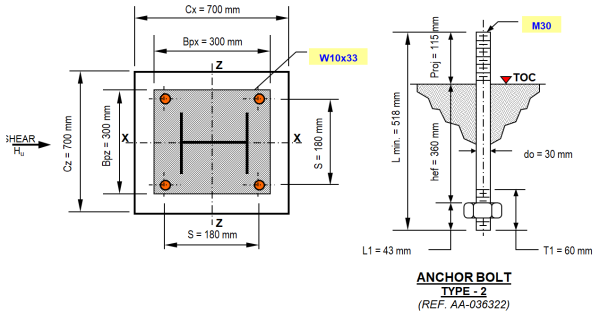
Description
Anchor bolt design is a crucial aspect of structural engineering, particularly in connecting structural elements to concrete foundations or other concrete members. Let's break down each term:
- Allowable capacities: These are the maximum forces an anchor bolt can safely withstand, typically determined by applying a safety factor to the ultimate strength. Allowable capacities are usually provided for both tension and shear loads.
- Design Requirement for Tensile Loading: This refers to the criteria that must be met when designing anchor bolts to resist forces pulling the bolt out of the concrete. The design must consider various failure modes and ensure the anchor can withstand the applied tensile loads.
- Steel Strength of Anchor in Tension: This is the capacity of the anchor bolt material itself to resist tensile forces without yielding or fracturing. It depends on the bolt's cross-sectional area and material properties.
- Concrete Breakout Strength of Anchor in Tension: This refers to the concrete's ability to resist a cone-shaped failure surface that may form when an anchor is pulled out. The breakout strength depends on factors such as concrete strength, embedment depth, and anchor spacing.
- Pullout Strength of Anchor in Tension: This is the force required to pull the anchor straight out of the concrete without concrete breakout. It's influenced by factors like embedment depth, concrete strength, and anchor head size.
- Concrete Side Face Blowout Strength of a Headed Anchor in Tension: This failure mode occurs when the anchor is placed near an edge and the concrete cover splits off. It's particularly relevant for anchors with large diameters relative to their embedment depth.
- Bolt Strength for Tension Load: Similar to steel strength in tension, this refers to the bolt's capacity to resist tensile forces based on its material properties and cross-sectional area.
- Design Requirement for Shear Loading: These are the criteria for designing anchor bolts to resist forces acting perpendicular to the bolt's axis. The design must account for various shear failure modes.
- Steel Strength of Anchor in Shear: This is the capacity of the anchor bolt material to resist shear forces without yielding or fracturing.
- Concrete Breakout Strength of Anchor in Shear: Similar to tensile breakout, this refers to the concrete's ability to resist a failure surface that may form when an anchor is subjected to shear forces. The breakout shape is typically a half-cone.
- Concrete Pryout Strength of Anchor in Shear: This failure mode occurs when the anchor is pulled out of the concrete due to a combination of shear force and the resulting moment. It's particularly relevant for short, stiff anchors.
- Bolt Strength for Shear Load: This refers to the bolt's capacity to resist shear forces based on its material properties and cross-sectional area.
- Interaction of Tensile and Shear Force: In many real-world applications, anchor bolts are subjected to both tensile and shear forces simultaneously. The interaction between these forces must be considered in design, typically using interaction equations that ensure the combined effects don't exceed the anchor's capacity.
When designing anchor bolts, engineers must consider all these factors and ensure that the chosen anchor can resist the applied loads without failing in any of these modes. The design process typically involves checking each potential failure mode and selecting anchor properties (such as diameter, embedment depth, and material) that provide adequate strength for all scenarios.
Calculation Preview
Full download access to any calculation is available to users with a paid or awarded subscription (XLC Pro).
Subscriptions are free to contributors to the site, alternatively they can be purchased.
Click here for information on subscriptions.
Comments: 1
×
johndoyle-admin
1 year ago
Thanks for sharing you calculation with us I have awarded a 3 month XLC Pro subscription by way of thanks!

